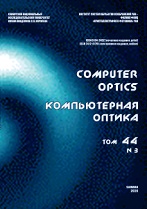|
This article is cited in 2 scientific papers (total in 2 papers)
IMAGE PROCESSING, PATTERN RECOGNITION
Mathematical models of obtaining stereo images from two-mirror catadioptric systems with regard to lens distortion
D. N. Stepanov
Program Systems’ Institute named after A.K. Ailamazyan of Russian Academy of Sciences (PSI RAS), Pereslavl-Zalessky, Russia
Abstract:
In this paper, we develop and research mathematical models that describe image acquisition from two-mirror catadioptric systems, which allow one to generate stereo images using a single camera and two flat mirrors. The main difference between the proposed models and existing solutions in this area is that real camera distortion is introduced into the images. An overview of the main methods of creating 3D models using optical technologies is presented, as well as an overview of types of catadioptric systems depending on the number of mirrors and their shape (curved or flat). The methodology of the research consists in the mathematical modeling of a two-mirror catadioptric system, as well as in a computer experiment using real images that were obtained using a stereo nozzle with two flat mirrors and synthetic images which were generated based on the ray tracing algorithm. Results of the experiments on the camera calibration with a stereo nozzle, as well as results of image rectification using the calibration data and developed mathematical models are presented. The results of the experiments allow us to verify the adequacy of the developed models. The proposed models expand the theory of computer vision and can be used in the creation and research of computer vision systems for robotic complexes.
Keywords:
computer vision, optical devices, calibration, math modeling, ray tracing, stereovision, optical characteristics, stereo nozzle.
Received: 09.07.2018
Accepted: 27.08.2018
Citation:
D. N. Stepanov, “Mathematical models of obtaining stereo images from two-mirror catadioptric systems with regard to lens distortion”, Computer Optics, 43:1 (2019), 105–114
Linking options:
https://www.mathnet.ru/eng/co610 https://www.mathnet.ru/eng/co/v43/i1/p105
|

| Statistics & downloads: |
| Abstract page: | 261 | | Full-text PDF : | 161 | | References: | 21 |
|




 Contact us:
Contact us: Terms of Use
Terms of Use
 Registration to the website
Registration to the website Logotypes
Logotypes








 Citation in format
Citation in format 
